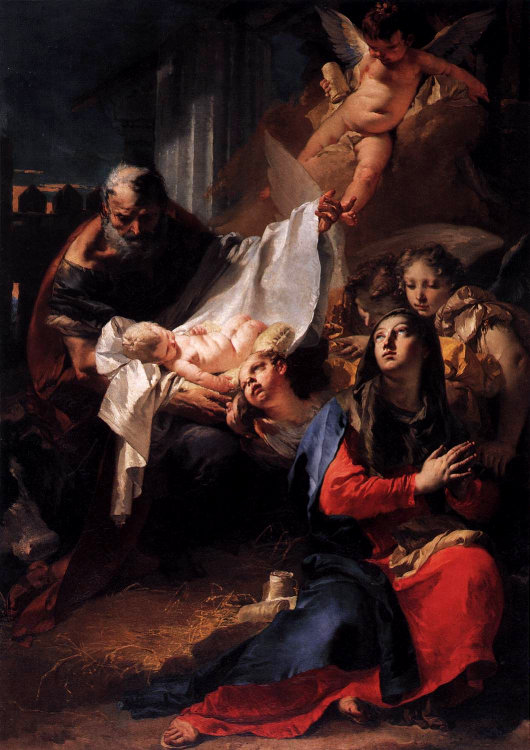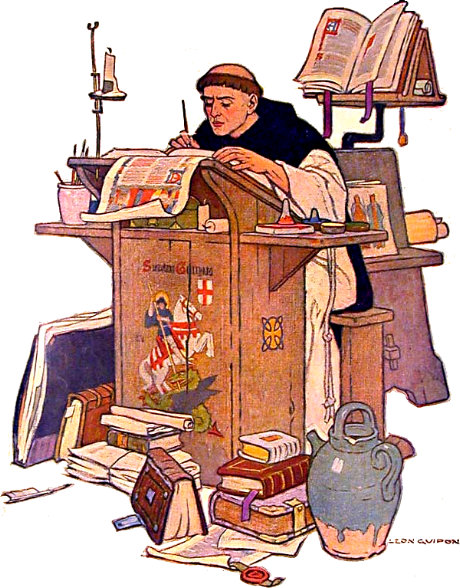2009 December
About Andrew Cusack
 Writer, web designer, etc.; born in New York; educated in Argentina, Scotland, and South Africa; now based in London.
Writer, web designer, etc.; born in New York; educated in Argentina, Scotland, and South Africa; now based in London. read more
News
Blogs
Reviews & Periodicals
Arts & Design
World
France
Mitteleuropa
Knickerbockers
Argentina
The Levant
Africa
Cape of Good Hope
Netherlands
Scandinavia
Québec
India
Muscovy
Germany
Academica
The Roman Forum
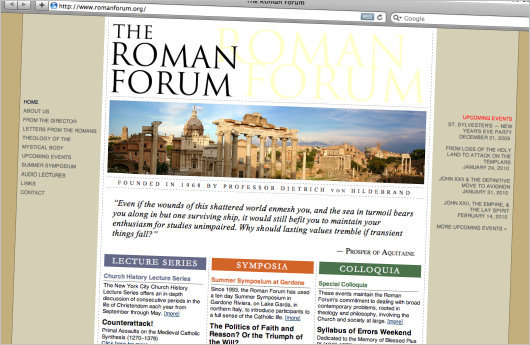
Over at The Hermeneutic of Continuity, Fr. Finigan points out the website of the Roman Forum, which (as it happens) was recently renovated by none other than yours truly. The Roman Forum is an excellent institution which organizes a church history lecture series here in New York, special colloquia such as the Syllabus of Errors weekend I recently attended, and of course its renowned Summer Symposium every year at Gardone on Lake Garda in Italy.
The theme of this year’s symposium is The Politics of Faith and Reason? Or the Triumph of the Will?. The list of illustrious names who will be in attendance this coming summer is indeed impressive: Jamie Bogle, the Chesterton Society’s Dale Ahlquist, Msgr. Barreiro, the Spanish jurist Miguel Ayuso, James Kalb, “Front Porcher” John Médaille, and Fr. Richard Trezza, who often says the old Mass at St. Agnes in New York on Sundays. And my friend Josh Copeland will be singing.
Each day involves three lectures (morning and before dinner), with sung Mass at noon, and musical and theatrical entertainments take place in the evenings after dinner. For years I’ve heard testimony from Gardone-goers about how enlightening, entertaining, and fun these ten-day symposia are, but I’ve not yet been able to attend myself.
The Roman Forum’s events are among the splendid outposts of civilization that preserve the animated spirit of the Faith so aptly captured by Hilaire Belloc’s lines: “Wherever the Catholic sun doth shine / There’s always laughter and good red wine.” I hope some of our readers will take a gander at their site and consider attending some of the numerous events they organize.
Hapsburg Hebraica
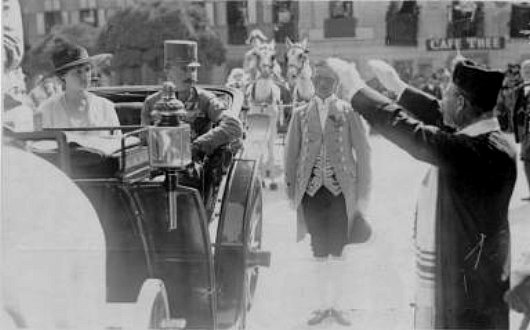
After the passing of the Hapsburg empire, which had been so protective of its Jewish subjects (especially compared to the regimes which succeeded it), numerous prominent Jews were received into the Catholic faith, perhaps having come to a full appreciation of precisely what they had lost. The subject of “Literary Jewish Converts to Christianity in Interwar Hungary” is worthy of further investigation (some graduate student should write a dissertation on just such a matter). I am no longer surprised when, in my researches, I come across yet another fascinating Hungarian Jew — be he a writer, playwright, poet, or patron — and discover, usually buried in some footnote, that he died a good Catholic.
Chartres 2009
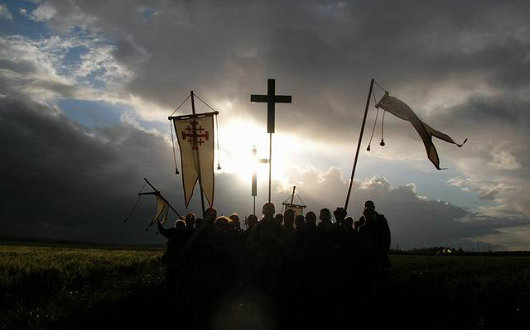
While there are but a few days to go, I can’t let this year depart without finally showing you photos of the 2009 Paris-Chartres pilgrimage which takes place every year on the weekend of Pentecost. (See 2008, 2005, 2004). The theme for the upcoming 28th Pilgrimage from Notre-Dame de Paris to Notre-Dame de Chartres was recently announced by the Association Notre-Dame de Chrétienté which organises the event. The 28th Pilgrimage will take place on the 22nd, 23rd, and 24th of May 2010, with the theme “The Church is Our Mother”. The themes for the individual days will be: 1) Teaching, under the patronage of St. Peter; 2) Sanctifying, under the patronage of St. Jean Vianney, the Curé d’Ars; 3) Governing, under the patronage of St. Pius X.
The following photos, however, are compiled from various sources, and show the pilgrimage which took place this past Pentecost. (more…)
La Bandiera dell’Io Amo L’Italia

In most countries, the voter of sound mind and disposition is hard pressed to find a political party worthy of his vote. One of the charming aspects of Italy is that the inverse is true: there are usually at least half-a-dozen political parties worth voting for, sound in policies and public morals, though the more recent trend has been towards amalgamation. It nonetheless often seems that every Italian of public stature has, at some time or another, founded his own political party.
Readers will no doubt recall the Holy Father’s rather brave baptism of the Egyptian-born Italian journalist Magdi Allam during the Easter Vigil of 2008. Signore Allam has proven his Italicity by following the peninsular trend of founding one’s own political party. Founded as Protagonisti per l’Europa Cristiana (Protagonists for Christian Europe), Allam’s party is now known as Io Amo L’Italia (I Love Italy). The party has had an early success in that its founder was elected to the European Parliament in the most recent elections, and he caucuses with the Christian-democratic Unione di Centro in the continental assembly.
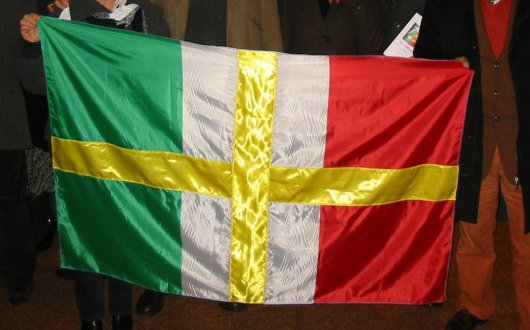
Anyhow, the relevance for us is that Magdi Cristiano Allam’s political party has adopted a “baptized” tricolore of its own: the green-white-red tricolour defaced (as is the proper vexillological term) with a simple golden cross the arms of which reach to the ends of the field. A very simple solution, and not half bad really. One of the party’s Facebook followers suggests having a tricolore with a Constantinian-style cross in the center, which is another not half bad idea.
In the Dublin auction houses
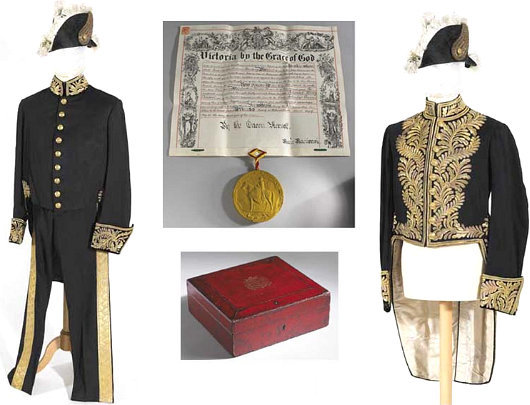
THOUGH THE BORING brains of tawdry metropolitan Londoners are all too quick at relegating Dublin to the provincial periphery of the mind, the Irish capital is a perpetual treasure trove for the old-fashioned and right-minded. A number of items of interests have recently been sold at the auction houses of the fair city, including two ceremonial uniforms (above) of that famous Dubliner, Sir Edward Carson QC. Carson was the lawyer and statesmen who passionately, but without bigotry, opposed the cause of Irish home rule. He was the defending barrister in the Archer-Shee case and led the Marquess of Queensberry’s team in Oscar Wilde’s doomed libel action. Carson and Wilde had been at Trinity together (where — little known fact! — Carson was a keen hurler), and the famous wit quipped of Carson “I trust he will conduct his cross-examination with all the added bitterness of an old friend.”
Having a fine mind for the law and being politically active meant that Carson moved through several layers of British government, holding numerous offices and positions. He was a Privy Counsellor twice over (of both Ireland and the United Kingdom), a Queen’s Counsel, served in the House of Commons as leader of the Irish Unionists, and held portfolios in the British Cabinet. The two ceremonial uniforms auctioned at Whyte’s of Molesworth Street are from his appointment as Solicitor General for England & Wales in 1900. (He had been Solicitor-General for Ireland in 1892, and was later Attorney General for England & Wales, in which position he was succeeded by the F.E. Smith of Chesterton’s famous poem).
The two black wool morning coats feature gold bullion trimming and buttons, and are sold with a pair of trousers with gold filigree stripe matching the lesser uniform, and knee breeches & silk stockings for the greater uniform. The vellum appointment as Solicitor General was also included, in a red leather box with a gilt impression of the royal arms. Whyte’s estimated a sale of €50,000-€70,000, but the lot’s realised price was €42,000. (more…)
The Oratory as It Was Built
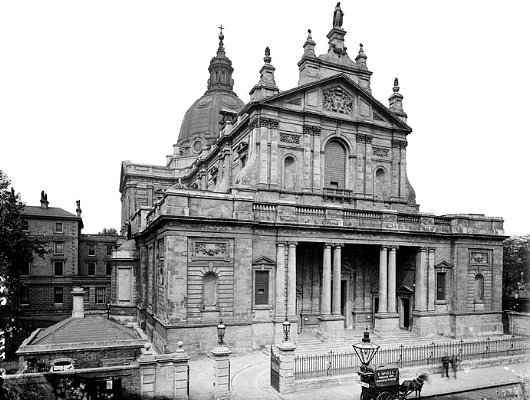
Since we explored Brompton Oratory as it might have been, here is the Oratory as it was built. The façade were finally completed in 1893 to a design by George Sherrin, with the dome following in 1894-95 by Sherrin’s assistant E. A. Rickards. How is the Oratory as depicted above different from the Oratory today? The fence and gates were replaced with a curved design at some date unknown to me, perhaps in response to a road-widening scheme.
Baptizing the Tricolore
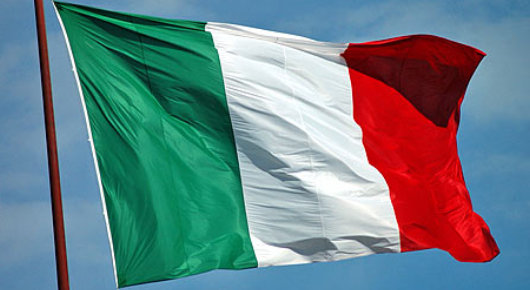
THE RECENT RULING of the self-styled “European Court of Human Rights” that the presence of crucifixes in Italian schools is a violation of the rights of a non-practicing Lutheran from Finland has sparked a surge of outrage against European institutions in Italy, and indeed elsewhere. While (as Gerald Warner has reported), the Italian Constitutional Court has shown the proverbial two fingers to the ECHR judgement in a ruling of its own, one junior cabinet minister has a suggestion of his own. Roberto Castelli, Italy’s deputy minister for infrastructure and transportation, suggests the country should reassert its Christian identity by adding a cross or crucifix to the Italian flag.
“I believe,” Mr. Castelli said, “that Europe has the right to recognize its true identity that we are starting to lose completely.” Even the Minister of Foreign Affairs, the Freemason and ex-Socialist Franco Frattini, seemed amenable to the idea. “Nine European countries already have the cross on their flag,” Frattini pointed out. “It is an extremely common proposition.” (more…)
Stefan Beck Online
 Fans, foes, and other followers of that favoured son of Granby, Mr. Stefan M. Beck, can track his hoots, wails, and whinnies at this new locale. The site archives a number of Stefan’s writings as well as containing his food blog, where, most recently, you can investigate the Ulster fry. Past mentions of Beck can be found here, including my favourite mental image of “wearing a bearskin and sacrificing holly-crowned virgins to Wotan”.
Fans, foes, and other followers of that favoured son of Granby, Mr. Stefan M. Beck, can track his hoots, wails, and whinnies at this new locale. The site archives a number of Stefan’s writings as well as containing his food blog, where, most recently, you can investigate the Ulster fry. Past mentions of Beck can be found here, including my favourite mental image of “wearing a bearskin and sacrificing holly-crowned virgins to Wotan”.
The House of Assembly
Die Volksraad
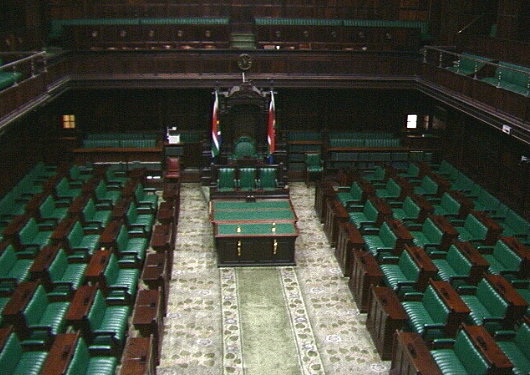
The House of Assembly (always called the Volksraad in Afrikaans, after the legislatures of the Boer republics) was South Africa’s lower chamber, and inherited the Cape House of Assembly’s debating chamber when the Cape Parliament’s home was handed over to the new Parliament of South Africa in 1910. The lower house quite soon decided to build a new addition to the building, and moved its plenary hall to the new wing. (more…)
No. 82, Eaton Square
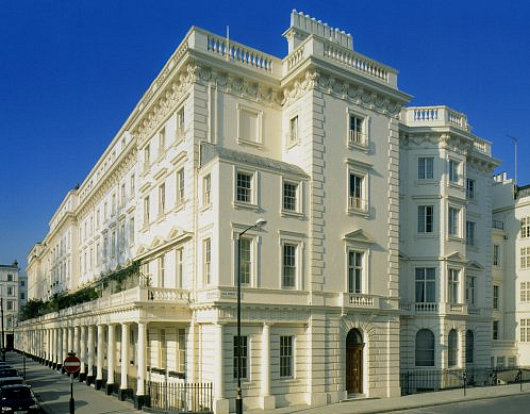
In it’s long history, the address of No. 82 Eaton Square in London has housed a Major-General of the East Indian Cavalry, a Lord Strafford, a Lord Bagot, an Earl of Dalhousie, an Earl of Clare, a Duke of Bedford, and Queen Wilhemina of the Netherlands — thankfully not all at once. It’s probably best know for its half-century as the Irish Club, a much-favoured drinking & smoking spot for the community of Gaels in London. The club was founded in 1947, with a number of pre-existing Irish clubs merging into it. George VI — grateful for the devoted service of the Irish who volunteered for his armed forces during the Second World War — heard that the club was in search of premises and asked the Duke of Westminster, one of the largest landowners in London, if he could help. The Duke provided the leasehold of No. 82 Eaton Square to the Irish Club for a nominal sum. (As it happens, the 4th Duke’s son served as a Unionist MP for Fermanagh & South Tyrone, and later in the Northern Irish Senate). (more…)
30,000 More into the Mouth of Moloch

Earlier this month, as part of his policy to appear ever more like his predecessor, President Obama announced his new Afghanistan strategy. The President exhibited his environmentalist credentials by craftily recycling the lamentable Bush plans for an Iraq “surge” and rehashing them for use in Afghanistan. The happy result is that Obama’s approval ratings have nose-dived — again, the similarities to former president G.W. Bush are striking.
“Barack Obama has found his Vietnam moment,” reports the redoubtable Gerald Warner. “His West Point speech was a travesty of dishonesty, indecision, half-measures and vicious partisanship.”
“To say he was economical with the truth would be putting it mildly. The porkie count was astronomic. In his rampantly partisan style he claimed of the Bush administration: ‘Commanders in Afghanistan repeatedly asked for support to deal with the re-emergence of the Taliban, but these reinforcements did not arrive.’ Not true. The Bush administration never hesitated to commit troops to Middle Eastern killing grounds: that was one of its worst defects.” (more…)
How Not to Build a Library

This computer-generated image has been doing the rounds on a variety of blogs across the internet. It depicts one of the numerous proposals for the extension of the Stockholm Public Library, this one drafted by a team from the Paris-Val de Seine architecture school. Over at the Long Now Blog, Alexander Rose calls it “awesome” and says “This design seems like it would lend itself well to a 10,000 year library”. As a monument this design is impressive — perhaps intimidating is the more appropriate word — but as a library it’s hard to conclude it would be anything other than a complete and total failure. And as for lasting 10,000 years, all those walkways to access the books look exceptionally brittle — I doubt they’d last a hundred years let alone ten thousand. (more…)
Le « dingbat » du Figaro
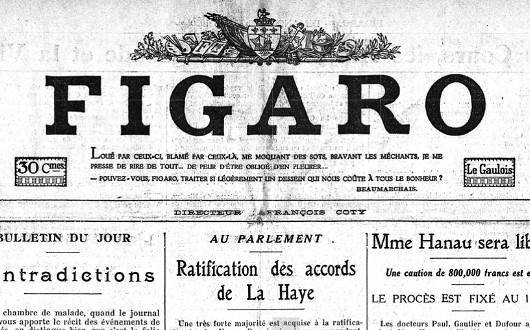
Did you know that Le Figaro used to have a “dingbat”? No, neither did I, until I was stumbling through the archives the other day. For a brief period in the 1930s, the Fig stylistically dropped the article “le” from its nameplate, while continuing to be known as “Le Figaro” for all intents and purposes. Simultaneously, they introduced a handsome horizontal dingbat to sit atop the newspaper’s unique name. (more…)
St. Zita?
Church Opens Investigation into Sanctity of Zita of Bourbon-Parma, Wife of Blessed Charles and Last Empress of Austria-Hungary
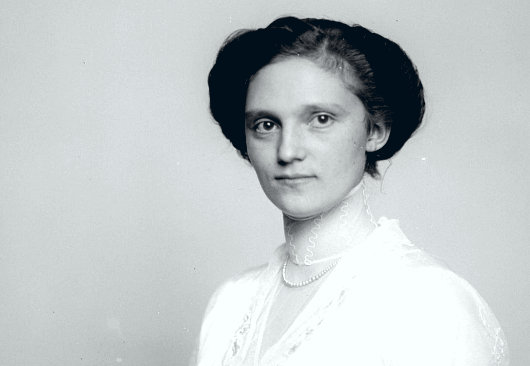
It was announced recently that Mgr. Yves Le Saux, Bishop of Le Mans in the traditional province of Maine (Pays de la Loire), France has opened the cause for the beatification of Zita of Bourbon-Parma, the long-lived wife of Blessed Emperor Charles of Austria. Charles, the last (to date) Emperor of Austria, Apostolic King of Hungary, and King of Bohemia (&c.), died in exile in Madiera in 1922, aged just thirty-four years. Zita Maria delle Grazie Adelgonda Micaela Raffaela Gabriella Giuseppina Antonia Luisa Agnese de Bourbon-Parma, meanwhile, was born in Tuscany in 1892 and lived a long life, giving up the ghost in March 1989, and interred in the Capuchin vault in Vienna following a funeral of imperial dignity.
“The process was opened in Le Mans,” Gregor Kollmorgen of TNLM reports, “and not in the Swiss diocese of Chur, where the Empress died twenty years ago in 1989 in Zizers, with the consent of Msgr. Huonder, the Bishop of Chur, and the permission of the Congregation for the Causes of the Saints, because within the diocese of Le Mans is situated the Abbey of Solesmes, well known to NLM readers for its leading rôle in the early liturgical movement in the nineteenth century, especially regarding Gregorian chant, and which was the spiritual center of the Servant of God Zita, her home among her many exiles.”
Zita’s relationship with Solesmes dates back to 1909 when she first visited its sister-abbey of St. Cecilia on the Isle of Wight in England. She became an oblate of the Abbey of Solesmes itself in 1926. Her daily life after the exile & death of her saintly husband included the Rosary, hearing multiple daily masses, and praying part of the Divine Office. (more…)
The Internal Exile of the Saar
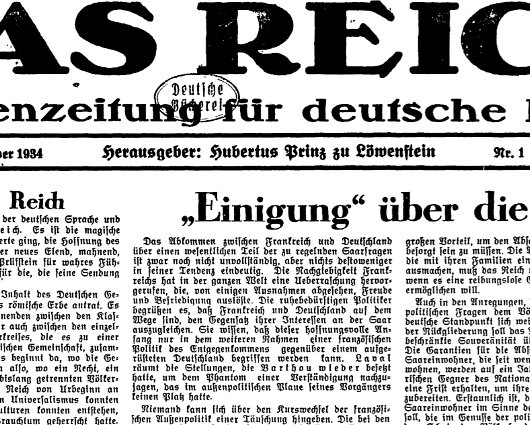
At the beginning of Hitler’s rule, many patriotic German anti-Hitlerites fled to the Saarland, which was Germany but still under French occupation. In a bizarre state of internal exile, anti-Nazi publications, be they Christian, Nationalist, Communist, or Jewish flourished for a very brief period. One of these journals was Das Reich, founded by Hubertus Prinz zu Löwenstein, who (if I recall my personal studies from St Andrews years properly) was a bit of a rogue in his own way, sympathizing with the Red forces during the Spanish Civil War.
A plebiscite on rejoining the Saarland with Germany proper had been scheduled before Hitler’s rise to power (just like the lamentable award of the 1936 Olympics to Berlin, though they turned out to be some of the most influential and well-run games to date) and, while the inhabitants were no keen Hitlerites, they had naturally tired of French occupation and duly voted to kick the French out. Right result, but very poor timing.
The anti-Hitlerites had to flee further, to Paris (where Pariser Tageblatt and later Pariser Tageszeitung were founded), London, and New York. German Jews sometimes fled as far as Shanghai where the English-language Shanghai Jewish Chronicle began a German edition in response to the influx. (There are some interesting stories about Shanghai Jews, and of course the famous newspaper-owning family of Jewish converts to Catholicism in Shanghai, but they’ll have to wait for another day).
The Feast of the Immaculate Conception at the Piazza di Spagna, Rome
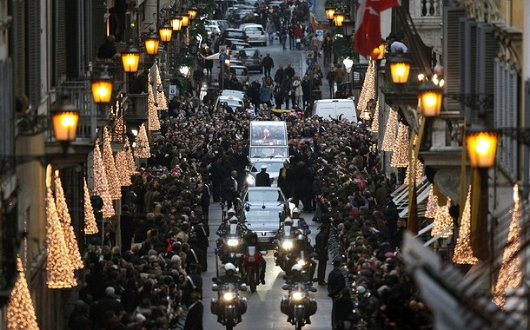
In 1856, Pope Pius IX erected a column dedicated to the Blessed Virgin in the Piazza di Spagna, commemorating the Proclamation of the Dogma of the Immaculate Conception just two years before, and since that year every reigning pontiff has remembered the Virgin at her column on the feast of the Immaculate Conception. Above, the Pope is seen turning onto the Via Condotti which leads to the Piazza di Spagna. The Palazzo Malta is designated by the flags on the right. (more…)
Baron Bossom’s Bridge
The Unbuilt ‘Victory Bridge’ Crossing the Hudson River at Manhattan
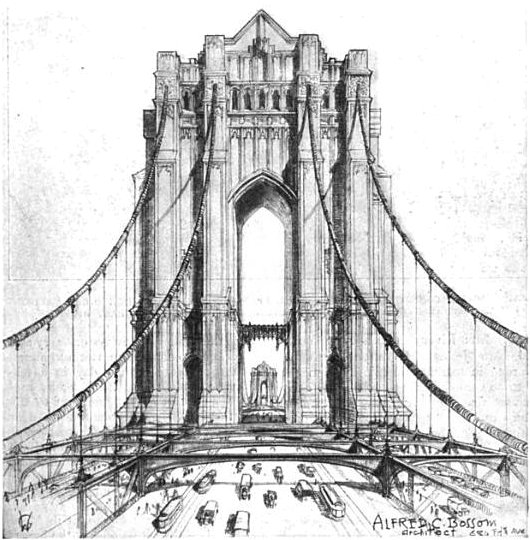
After the victory of America and her “co-belligerents” in the First World War, a temporary victory arch was erected out of wood and plaster to welcome the troops home from Europe. After the arch was dismantled, however, discussions soon arose on how to permanently commemorate the war dead of New York, with a surprising variety of suggestions made. A beautiful water gate for Battery Park was suggested, with a classical arch flanked by Bernini-like curved colonnades, so that a suitable place existed to welcome important dignitaries and visitors to New York. (Little did they know how soon the airlines would replace the ocean lines). Another proposal was for a giant memorial hall located at the site of a shuttered hotel across from Grand Central Terminal, while others suggested a bell tower.
An entirely different proposal, however, was made by the New York architect Alfred C. Bossom (later ennobled as Baron Bossom of Maidstone). Bossom, an Old Carthusian, was an Englishman by birth and eventually returned to his native land, where (in 1953) he gave away the future prime minister Margaret Roberts at her marriage to Denis Thatcher. He himself served in parliament from 1931 until 1959, excepting his wartime Home Guard service. Jokes were often made about his surname resembling both “bottom” and “bosom”. Upon being introduced to Bossom, Churchill jested “Who is this man whose name means neither one thing nor the other?” (more…)
Search
Instagram: @andcusack
Click here for my Instagram photos.Most Recent Posts
- Burns Tower April 19, 2024
- Patrick in Parliament March 18, 2024
- Articles of Note: 13 March 2024 March 13, 2024
- Cambridge March 9, 2024
- Taken on Trust March 4, 2024
Most Recent Comments
Book Wishlist
Monthly Archives
Categories

